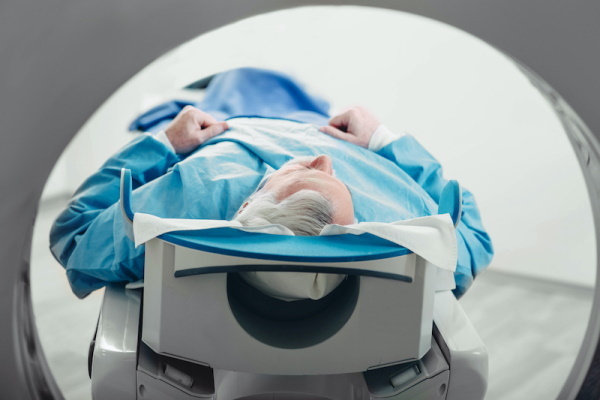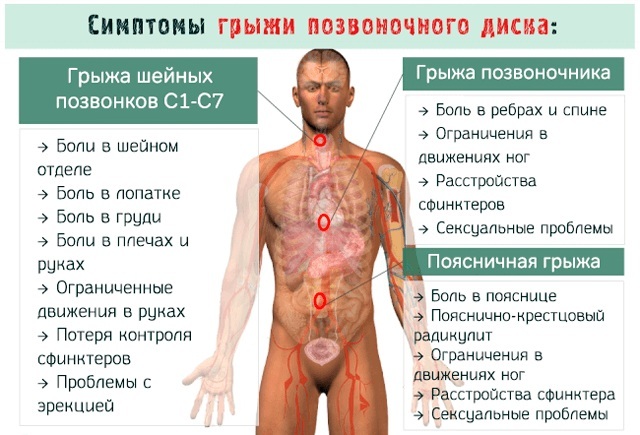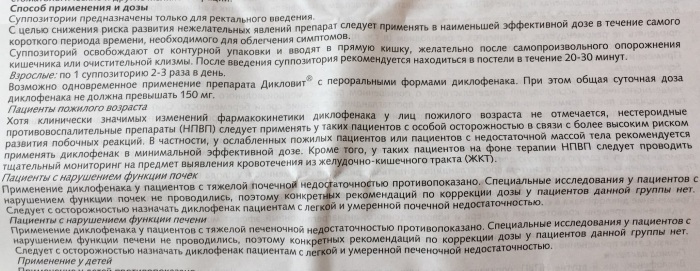Content
- Description of PET / CT technology
- Advantages and disadvantages of the method
- What changes does PET / CT show?
- PET in the diagnosis of malignant neoplasms
- Types of radioactive preparations for PET
- When is a PET scan indicated?
- Contraindications to research
- Patient radiation exposure
- Preparing the patient for the procedure
- Passage of diagnostics
- Interpreting PET-CT Results
- Complications and side effects
- Diagnostic price
- Patient feedback on the safety of the procedure
- Feedback on the informative value of the study
- Reviews about the consequences after diagnosis
- Feedback on the manufacturability of this diagnosis
- Reviews about the speed of the procedure
- Feedback on how often you need to have a PET-CT scan
- Videos about PET CT
PAT CT is a modern diagnostic method patients who have signs of oncological diseases of the internal organs, muscular system or individual parts of the musculoskeletal system. Reviews of patients who underwent this type of hardware examination confirm its high information content and absolute safety for the body.
Description of PET / CT technology
PET CT (Positional Emission and Computed Tomography) is an innovative diagnostic technique that scans the entire body. The main task of studying the tissues of the human body using this equipment is to identify extraneous neoplasms in the early stages of their development.
PET CT is performed for the routine diagnosis of people with signs of cancer and for the prevention of cancerous tumors. A characteristic feature of positional emission and computed tomography is that it performed according to all standard CT rules, but using special radiopharmaceutical drugs.
Medicines from the radiopharmaceutical group are used to scan the body patient, get the effect of uneven distribution of constituent particles that are contained in medication. After administration, the active substance of the contrast agent accumulates in those tissues of internal organs and other parts of the body, where an extraneous neoplasm is localized.
In the cells that are part of the tumor, there is always an increased metabolism. The components of the radiopharmaceutical are accumulated in the tissues with more active metabolism, and then displayed in the process of computer scanning of the body. With the help of this diagnostic technology, oncologists are able to timely detect tumors, the size of which ranges from 4 to 6 mm.
Advantages and disadvantages of the method
Reviews of patients who were examined using PET-CT diagnostics indicate a large number of advantages of this method.
The advantages of positional emission and computed tomography are distinguished:
- high information content of this method of hardware examination, after passing which there are practically no questions and doubts about the diagnosis;
- the possibility of detecting cancerous tumors that are still at the asymptomatic stage of their development (this is an advantage positional emission and computed tomography is especially important for the prevention of cancer diseases);
- the absence of any painful sensations, since the procedure itself does not cause any feeling of discomfort;
- making a final diagnosis, as well as performing an examination of internal organs does not require surgical intervention;
- makes it possible to identify the boundaries of the spread of a malignant neoplasm and identify the localization of metastatic cells;
- does not require complex preparatory actions;
- allows you to speed up the process of diagnosing the body for the presence of malignant neoplasms.
In terms of its information content, PET-CT is superior to other hardware diagnostic methods such as MRI, ultrasound, and radiography. In order for the oncologist to detect the possible presence of a tumor neoplasm, it is enough to go through only positional emission and computed tomography, as well as donate blood for its biochemical research.
Despite the large number of advantages of using PET / CT, the following disadvantages of this diagnostic method are highlighted:
- quite high cost;
- a long waiting period before the examination, during a body scan, as well as upon completion of the diagnosis (in general, the patient needs to spend about 5 hours within the walls of the clinic);
- during the treatment of an existing oncological disease, several procedures may be required positional emission and computed tomography for more effective control over the condition tumors;
- performing a PET-CT scan involves the intravenous administration of a radiopharmaceutical that provides contrasting of healthy and oncological tissues (in this case, the risk of developing side effects).
Before undergoing examination of the body using positional emission and computer tomography, an examination is carried out for the possible presence of contraindications to the use of this procedures. The patient is explained the rules of preparation for the diagnosis, as well as the risk of complications if these recommendations are not followed.
What changes does PET / CT show?
PET / CT (patient reviews about this procedure indicate its absolute painlessness) shows even the slightest changes in the structure of tissues that are subject to examination. This type of diagnosis displays an accumulation of cells, inside which all metabolic processes are more active.
This is one of the basic signs of an extraneous neoplasm, which has rapid growth, and also develops separately from other tissues of the internal organ. The more advanced and severe the stage of cancer, the higher the density of the cellular substrate, which is detected using a contrast agent and computer scanning techniques.
PET in the diagnosis of malignant neoplasms
PET-CT is the "gold standard" in the diagnosis of malignant neoplasms that are localized in internal organs and glandular tissues.
It is believed that this method of hardware inspection gives the greatest amount of information:
- the nature of the origin of the tumor;
- type of malignant neoplasm;
- the boundaries of the spread of the oncological process;
- the degree of damage to the organ in the structure of which the cancer is located.
With the help of positional emission and computed tomography, it is possible to track the dynamics of the growth of malignant neoplasm, as well as its reduction, if the patient is undergoing complex therapy for oncological diseases.
Types of radioactive preparations for PET
PET / CT (patient reviews about this diagnosis are predominantly positive) is a modern examination method, which is impossible without the use of a radiopharmaceutical. The table shows the main types of drugs in this category used to detect tumors.
| Name of the radioactive product for PET | The purpose of using this type of medication |
| 18F-fluorodeoxyglucose | This type of radiopharmaceutical is considered a universal tool for detecting cancer cells. The active components of the drug are very quickly absorbed by the cells of all tissues of the human body, since the biochemical composition of the drug is very close to ordinary glucose. With the help of 18F-fluorodeoxyglucose, malignant neoplasms of 4 mm or more can be detected. This type of drug is best suited for the detection of neuroendocrine tumors. This diagnostic agent is excreted from the patient's body together with urine within 24 hours. |
| 18F-PSMA | The radiopharmaceutical 18F-PSMA is used to diagnose patients who have objective suspicions of the presence of extraneous neoplasms of the prostate gland. This tool allows you to identify a tumor of a benign nature of origin. |
| 18F-FET | Diagnostic medication 18F-FET is used in the examination of patients with signs of neoplasms in the structure of the spinal cord and brain. This drug can detect tumors of various origins. |
| 68GaPSMA | This type of radiopharmaceutical is indicated for use in the diagnostic confirmation of prostate cancer. This medication detects only tumors of malignant etiology. |
What type of radiopharmaceutical to use in a specific clinical case is determined by the attending oncologist who performs the diagnostic examination of the patient. Each type of medication has indications and contraindications for use.
When is a PET scan indicated?
PET-CT (patient reviews confirm the reliability of this type of diagnosis) has indications for:
- identification of primary foci of extraneous neoplasms, as well as their metastases;
- performing an assessment of the quality of the therapeutic process aimed at getting rid of the tumor;
- determining the nature of the origin of an extraneous neoplasm (using positional emission and computed tomography, it is possible to differentiate benign and cancerous tumors);
- preliminary planning of the scheme of future therapy.

Using the method of positional emission and computed tomography, they perform the detection of tumors that are localized in the following parts of the body:
- thyroid;
- ovaries;
- all parts of the intestine;
- mammary gland;
- lungs;
- brain and spinal cord;
- the prostate gland and testes in men;
- bone tissue of the skeleton;
- neck.
PET-CT makes it possible to detect sarcomas affecting soft tissues, melanomas, non-Hodgkin's lymphomas, as well as diagnose the early stages of Hodgkin's disease. The appointment of positional emission and computed tomography is carried out by an oncologist based on the results of a preliminary examination of the patient.
Contraindications to research
PET-CT (patient reviews confirm the need to use this diagnostic method) has contraindications for use:
- the state of pregnancy;
- diabetes mellitus with blood glucose levels above 11 mmol per 1 liter;
- chronic renal failure;
- the state of decompensation of internal organs when the patient is in serious condition;
- neuropsychiatric disease, which is accompanied by the manifestation of uncontrolled psychoemotional reactions;
- severe pain syndrome associated with various kinds of body injuries, an acute inflammatory process (in this case, the patient will not be able to lie still for the next 2-3 hours);
- acute infectious diseases.
Tumor detection by positional emission and computed tomography is not performed in patients with tuberculosis. Women who are breastfeeding a newborn baby should stop lactating within the next 24 hours after the completion of the examination. During this period of time, the complete removal of the radiopharmaceutical from the mother's body will occur.
Patient radiation exposure
The body of a patient undergoing examination using positional emission and computed tomography is not exposed to significant radiation exposure.
In this case, the effect of the radioactive components of the diagnostic product is not stronger than during the X-ray examination. Radiopharmaceuticals do not accumulate in tissues and internal organs, but are excreted from the patient's body within 1 day. The main burden for the utilization of the diagnostic substance falls on the kidneys. In this regard, the medication is not recommended for use in patients with chronic renal failure.
Preparing the patient for the procedure
Preparation for positional emission and computed tomography includes the following steps:
- 48 hours before the appointed date of diagnosis, completely exclude cereals from your diet, bakery and confectionery products, products containing complex carbohydrates, increased concentration glucose and fructose.
- Do not drink alcohol 2 days before the examination.
- The last meal should take place 6 hours before the visit to the clinic, since this diagnostic procedure is performed on an empty stomach.
- 48 hours before the PET-CT scan, you must not expose the body to physical exertion and hypothermia.
- On the day of the diagnosis, it is necessary to wear the most comfortable clothes that do not squeeze the body, and also do not contain metal elements.
Patients who suffer from diabetes mellitus should go through the stage of preliminary consultation with an endocrinologist. On the day of the examination, you must have medical documentation with you regarding all diagnostic procedures that were performed earlier. Upon arrival at the clinic, the patient should spend about 60 minutes in the supine position, performing the minimum number of movements.
Passage of diagnostics
Examination of the body using positional emission and computed tomography is carried out in 2 stages. The patient is transferred to a room for a PET-CT scan, where he receives an intravenous injection of a radiopharmaceutical.
The distribution of the drug throughout all the cells of the body occurs within 1 hour. During this period of time, the person should remain in the supine position, not reading, not using the phone, or talking to others. Only the use of ordinary water without gases is allowed.

The next stage of PET / CT diagnostics is placing the patient in a tomograph with further scanning of all parts of his body, as well as structural elements of the musculoskeletal system. Oral contrast media may be required depending on the case. For example, if you need to improve the quality of visualization of the intestines, stomach, esophagus.
The software installed on the diagnostic equipment superimposes CT scans onto the image obtained during positional emission tomography. The results obtained make it possible to conduct a detailed study of physiological, structural, and metabolic changes in the examined tissues.
Interpreting PET-CT Results
The interpretation of the results obtained is carried out by the attending oncologist, who appointed the patient to undergo this type of examination, or by a board of doctors of the appropriate qualifications. Interpretation of images obtained using positional emission and computed tomography is carried out by comparing the state of the cells under study in a particular part of the body with the indicators of the norm.
Accumulation of radiopharmaceutical particles in the tissues of a specific organ, displaying too active metabolism in a limited number of cells, allows you to determine a tumor neoplasm and highlight its boundaries location. A medical report on the results of the examination is drawn up the next day after the visit to the clinic. An electronic copy of the photographs is stored on the hard disk of the computer device.
Complications and side effects
Immediately after intravenous administration of the radiopharmaceutical, the side effect of intense feeling may occur heat, which spreads through the muscle tissues of the upper and lower extremities, penetrates into the abdominal cavity, covering completely everything body.
In this case, there is no cause for concern. After 10-15 minutes. the patient's well-being is stabilized. Radiopharmaceuticals used for positional emission and computed tomography do not cause complications and do not have negative consequences for the patient's body.
Diagnostic price
The table shows the average prices for a diagnostic examination using the PET-CT technique.
| Type of diagnostic manipulations | Average cost, rub. |
| PET-CT procedure | from 48,000 to 60,000 |
| Intravenous administration of a radiopharmaceutical prior to positional emission and computed tomography | from 4600 to 5700 |
| Oral administration of a contrast agent for the diagnosis of hollow organs (stomach, esophagus, intestines) | from 1250 to 1660 |
The cost of PET / CT examination depends on the complexity of the clinical case, the extent of the lesion malignant neoplasm, the general condition of the patient, as well as the price policy of the management diagnostic center.
Patient feedback on the safety of the procedure
Most patients who underwent examination using positional emission and computed tomography note the absolute safety of this diagnostic method. A radiopharmaceutical that is injected into the body to detect extraneous neoplasms is a pharmacologically neutral substance. The diagnostic medication does not disrupt the work of internal organs, does not have a toxic, carcinogenic or mutagenic effect.
Feedback on the informative value of the study
Patients who were assigned to be examined using the PET-CT technique confirm the high information content of this type of hardware diagnostics. In this case, the presence of a large number of positive reviews is justified by the fact that after positional emission and computed tomography does not require additional examination using ultrasound, MRI, radiography.
Reviews about the consequences after diagnosis
According to the reviews of most patients, the passage of PET-CT diagnostics does not entail complications or any other negative consequences.
Feedback on the manufacturability of this diagnosis
Practicing oncologists confirm the fact that PET-CT is one of the most modern methods detection of extraneous neoplasms, during the implementation of which only high-tech equipment.
Reviews about the speed of the procedure
Patients who have undergone PET-CT diagnostics say that, on average, they will have to spend 2 to 5 hours in a clinic room, depending on the clinical symptoms and the type of disease.
Feedback on how often you need to have a PET-CT scan
Just one diagnostic procedure is enough to make a final diagnosis. Still, there are cases when a repeated study of the physiological state of the tissues of the internal organs, the muscular system and the musculoskeletal system is required.
PET-CT is a hardware diagnostic method that can be used to conduct the most informative examination of the human body. The purpose of using positional emission and computed tomography is to detect benign and cancerous tumors located in the thyroid, prostate, breast, gastrointestinal tract, lungs, ovaries. PET-CT diagnostics is performed using radiopharmaceuticals.
The type of diagnostic medication is selected individually, depending on the type of disease, the symptoms of which are found in a particular patient. Reviews of patients and oncologists who use PET-CT diagnostics confirm its high efficiency.
Videos about PET CT
About PET CT diagnostics in oncology:



